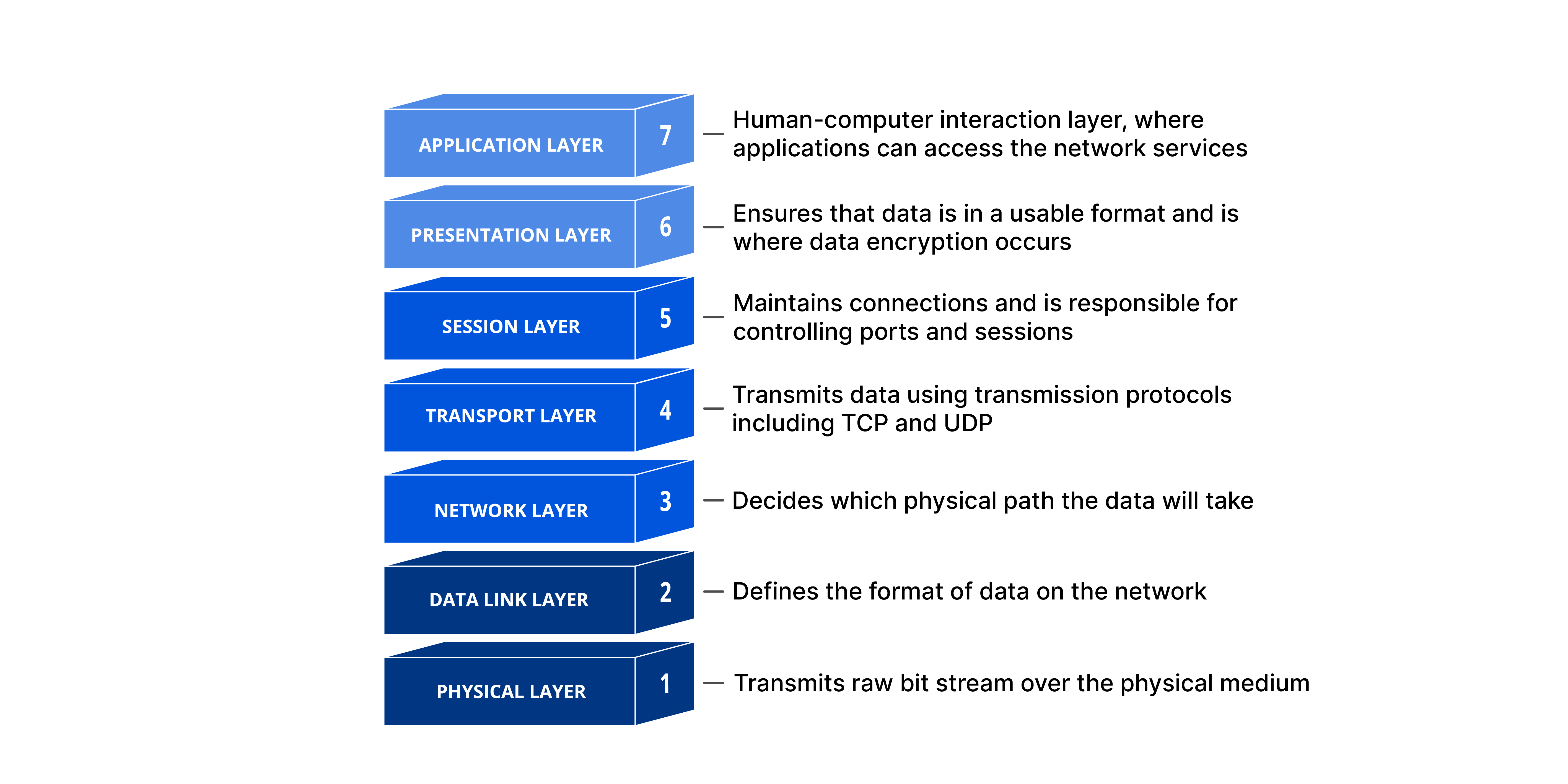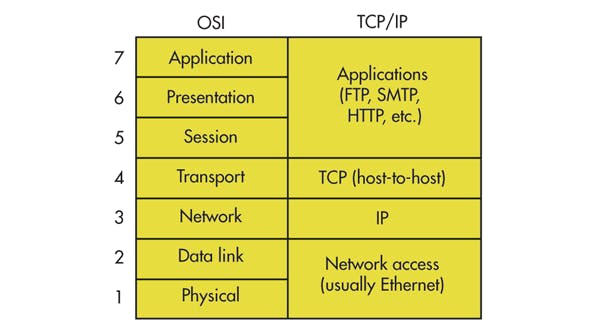OSI七层模型 OSI Network 7 layers Model
The OSI Model can be seen as a universal language for computer networking.

-
物理层,The Pysical
-
数据链路层,The data link layer
- The data link layer is very similar to the Netowkr layer, except the data link layer faciliates data transfer between two devices on the same network.
- Ability:
- The data link layer takes packets from the network layer and breaks them into smaller pieces called frames.
- Like the network layer, the data link layer is also responsible for flow control and error control in intra-network communication.
-
网络层,The network layer
- The network layer is responsible for facilitating data transfer between two different networks. If two devices communicating are on the same network, then the network layer is unecessary.
- Ability:
- breaks up segments from the transport layer into smaller units, called packets, on the sender’s device, and reassembling these packets on the receiving device.
- Protocols:
- the Internet Protocol, IP
- the Internet Control Message Protocol, ICMP
- the Internet Group Messsage Protocol, IGMP
- the IPsec suite
-
传输层,The transport layer
- It is responsible for the end-to-end communication between the two devices.
- Ability:
- taking data from the session layer and breaking it up into chunks called segments before sending it to layer 3.
- The transport layer only does flow control and error control for inter-network communications.
- Protocols:
- Transmission Control Protocol(TCP)
- User Datagram Protocol(UDP)
-
会话层,The session layer
- This is the layer that is responsible for opening and closing communication between the two devices.
- Protocols:
- Important Protocols at Session Layer include SIP, PPTP, H. 245, PPTP/L2TP, SMB, NFS and PAP.
-
表示层,The presentation layer
- This layer is primarily responsible for preparing data so that it can be used by the application layer; in other words, layer 6 makes the data presentable for applications to consume. The presentation layer is responsible for translation, encryption, and compression of data.
- Protocols:
- MIDI, MPEG, TDI, TLS, XDR, and HTTP/ HTML
-
应用层,The Application Layer
- This is the only layer that directly interacts with data from the user. Software applications like web browsers and email clients rely on the application layer to initiate
- Protocols:
- Hypertext Transfer Protocol (HTTP)
- Simple Mail Transfer Protocol (SMTP)
Simple Illustration

reference:
- Open Systems Intercoonnection Model OSI https://www.cloudflare.com/learning/ddos/glossary/open-systems-interconnection-model-osi/
- What’s The Difference Between The OSI Seven-Layer Network Model And TCP/IP? https://www.electronicdesign.com/technologies/communications/article/21800810/electronic-design-whats-the-difference-between-the-osi-seven-layer-network-model-and-tcp-ip